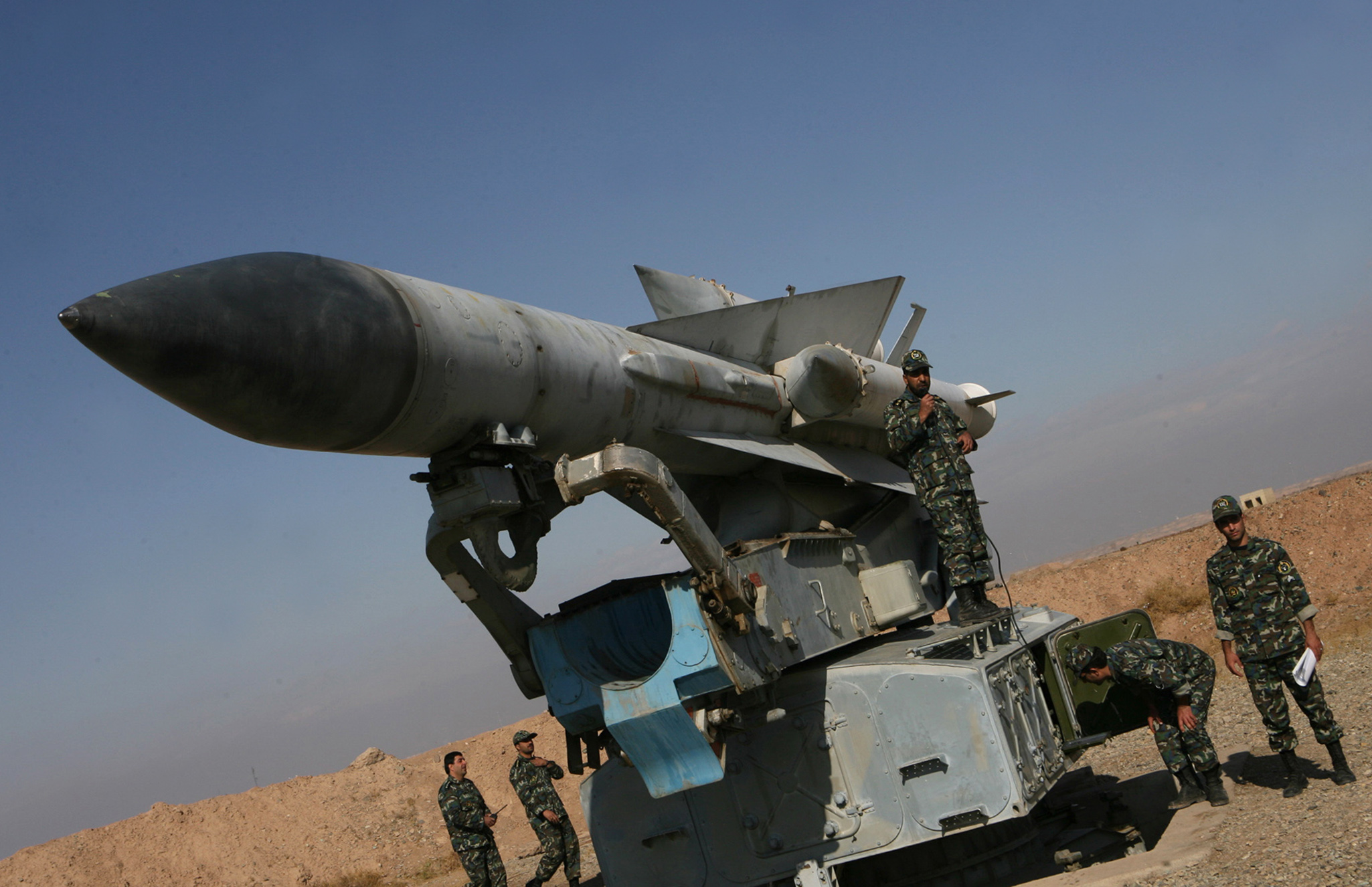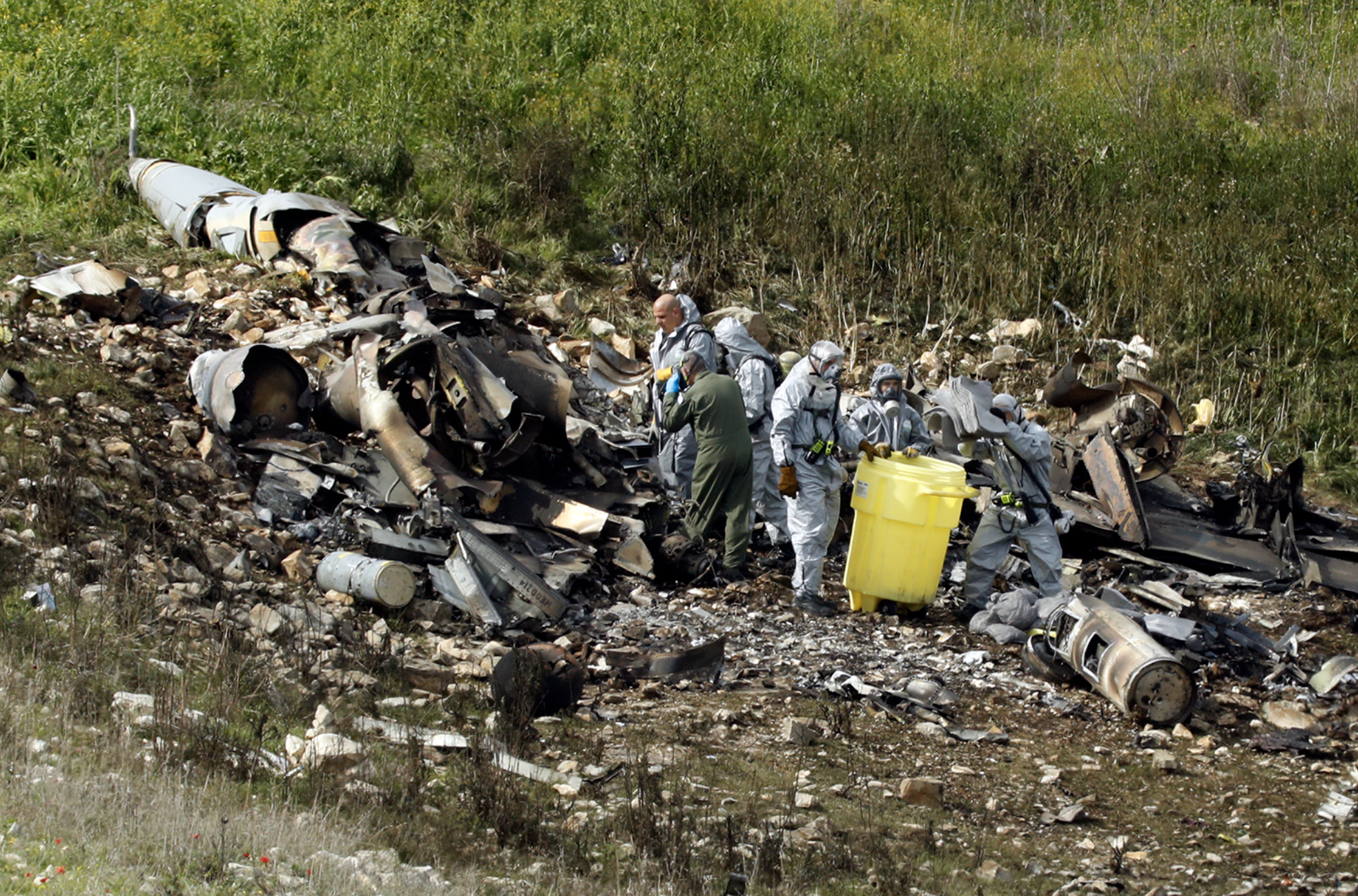Russia has claimed that Ukraine is now using Cold War-era S-200 long-range surface-to-air missiles — known to NATO as SA-5 Gammon — to attack land targets in its rear areas and in Russia itself. A video from one particular claimed strike appears to show a missile that looks very similar to an S-200 diving almost vertically onto a target, supposedly in Bryansk Oblast, in western Russia, a region that borders Ukraine.
While Russia has been using the advanced S-300 SAM — which possesses a little-known surface-to-surface capability, which can read all about here — to strike large static ground target areas in Ukraine, the use of the vintage S-200s, in this way, is a new development in this conflict. Indeed, until now there was seemingly no evidence of S-200s being used in any capacity, by Ukraine or Russia, and the incident raises many questions.
The S-200s could give Ukraine a quasi-short-range ballistic missile-like capability, and if the missiles were deeply modified, it’s possible they could be far more accurate in doing so than if used in their original configuration.
The most conclusive evidence, so far, of Ukraine using S-200s to strike ground targets is the video purportedly showing an attack on a sawmill in the settlement of Bytosh in Russia’s Bryansk Oblast, yesterday. Local surveillance cameras captured the arrival of the missile, which certainly bears the hallmarks of the S-200, or, more specifically, the 5V28 series missile used by this system, which was originally developed for high-altitude defense of large-area targets, including important administrative, industrial, and military installations.
Introduced to service in the late 1960s, and primarily intended to defeat high-flying U.S. bombers and reconnaissance aircraft, the S-200 system was deployed in static batteries that typically comprised six single-rail launchers, supported by a long-range surveillance radar, a target search and acquisition radar, a missile guidance radar, and multiple other support elements.
Powered by a single-stage liquid-fuel motor, plus a cluster of four jettisonable solid-propellant boosters, the 5V28 series missile measures around 35 feet in length, with a diameter of almost 34 inches, and in a surface-to-air role its later versions have a maximum range of approximately 186 miles. In Soviet service, the 5V28 could be fitted with either a big proximity-fuzed conventional 480-pound warhead or a command-detonated nuclear warhead, although there is no evidence the latter was ever available to Ukraine.
According to Russian accounts, another reported missile attack occurred on its border area yesterday, this time in Rostov Oblast, and was also attributed to the S-200. The target on this occasion appears to have been Morozovsk Air Base.
Perhaps most significantly, there are also reports that the S-200 was used yesterday in an attempt to target Kerch Bridge, the prized structure that connects Russia to Russian-occupied Crimea. Ukrainian media reported an attempted strike on the bridge using the S-200, while Russian sources claimed that their air defense operators shot down at least one missile just north of the Taman Peninsula, which borders the Azov Sea to the north, the Kerch Strait to the west, and the Black Sea to the south. Wreckage of the intercepted missile is said to have come down in the Azov Sea.
Despite Russia claiming that the missile was successfully intercepted, the incident reportedly led to the closure of Kerch Bridge by Russian authorities, leading to significant traffic jams.
Overall, the Russian Ministry of Defense claims that three S-200 missiles had targeted Kerch Bridge, but that all were destroyed. The same account notes that two other S-200 missiles were destroyed by its air defenses, while two more were defeated by undisclosed electronic warfare means, during what it says were attempted attacks in the Rostov and Kaluga regions in Russia.
All of these incidents are said to have occurred yesterday, although the defense ministry didn’t say what, if any targets had been hit, or how many of these missiles were fired in total.
It’s not clear how many, if any, S-200 systems were still active with the Ukrainian Armed Forces when Russia’s full-scale invasion began, but these missiles utilize static launchers and therefore are not highly mobile, being only suitable for the defense of static targets against high-flying threats.

So far, we have not seen evidence of Ukrainian S-200s being used, whether in an air defense capacity or as a surface-to-surface weapon. It remains a possibility, however, that Ukraine has reactivated some of its S-200 systems to bolster its legacy air defenses, which are clearly using up stocks of missiles at a prodigious rate. It could be that the missile that came down in Bryansk was actually an errant example that was intended to defeat an aerial target — something that has happened with air defense systems in the past. The fact that supposedly multiple missiles were launched against ground targets, at least based on Russian accounts, would seem to make that less likely.
As of 2010, it was reported that Ukraine still had four active S-200 batteries, providing air defense over much of the country, with a further 12 inactive sites. Further reports suggest the S-200 was removed from service in 2013, but it’s likely that Ukraine has not insubstantial reserves of these missiles, as well as potentially multiple locations from where they could be launched. It’s possible, too, that Ukraine may have developed some kind of mobile or more deployable launcher that would allow these missiles to be fired from different locations, too.
The S-200 system also gained a degree of infamy in Ukrainian service, back in October 2001, when an errant missile shot down a Russian airliner over the Black Sea, during a live-fire exercise.

It is possible, too, that Ukraine might have even received missiles for the S-200 system from other sources. Although no such transfer has been announced, potential donors exist in Europe, with Bulgaria and Poland both being current operators. Poland, in particular, has been an enthusiastic supporter of Ukraine and has previously delivered Soviet-era air defense missiles to Kyiv.
As a surface-to-air missile, the S-200 has been fairly widely used in recent years by Syria. Although debris from these weapons has ended up as far away as Israel, and even Cyprus, there is no evidence that Syria has used them in any capacity other than air defense, including in response to Israeli airstrikes. However, Syria has apparently taken to launching the missiles ballistically, without even acquiring a target, in an effort to sow confusion among the attacking force and put them on the defensive.
Syria has had very mixed results with its S-200s. A missile from one of these systems was involved in the shootdown of an Israeli F-16I fighter jet during an intense period of aerial activity over Syria in February 2018, while another accidentally downed a Russian Il-20 Coot electronic intelligence-gathering plane off the Syrian coast in September of the same year.

The use of a long-range surface-to-air missile to strike ground targets is by no means an entirely new development. During the Cold War, it was not uncommon for weapons of this type to have a secondary strike role and some air defense weapons today can also be used in this capacity. Since then, there have been other examples of Soviet-era surface-to-air missiles being repurposed to strike targets on the ground. Ukraine, too, has its own history of turning dated Soviet systems into long-range strike weapons, in the shape of adapted Tupolev reconnaissance drones.
It’s possible, too, that the S-200 always had a secondary surface-to-surface capability, although this would always have been limited by its static basing. The fact that it could carry a nuclear warhead would also have compensated for its reduced accuracy against ground targets. The same applies to the more modern S-300 system, which had a little-known surface attack role from the start, but which has the advantage of a mobile launch vehicle option.
The missiles used in the S-200 have inertial guidance systems with updates provided by radio link and, for the terminal phase, semi-active radar homing. While it’s highly unlikely that, under most circumstances, it would be challenging to illuminate a ground or surface target for the missile to home in on, the combination of inertial guidance and radio updates would presumably provide enough accuracy to hit larger, area targets.
Of course, there also exists the very real possibility of a more extensive series of modifications to the missile, perhaps even adding a new type of guidance system entirely, such as GPS. The missile’s large warhead can be used for ground attack, but it could also be switched with one better suited to that role.
But even in its far less accurate form, firing S-200s at large area ground targets would give Ukraine the quasi-short-range ballistic missile-like capability it so desperately wants, even if to a limited degree and with limited accuracy. As noted earlier in this piece, when launched on a ballistic trajectory, these weapons can have short-range ballistic missile-like range, also giving it the long reach Ukraine is seeking. This type of basic guidance would still limit how it is employed and the types of targets it can be used against.
If Ukraine is indeed using S-200s in a surface-to-surface capacity in a precision strike, not just an area attack role, it’s clear that some kind of major modification has been achieved. If reports that this weapon was used in an attempt to hit the Kerch Bridge are correct, then it must also be the case that a sufficient degree of accuracy for this kind of target is also judged realistic. Although there are some caveats, such as using these missiles in a simpler form to saturate Russian air defenses while other types of attempted attacks are attempted.
Certainly, it would appear that the Russian Ministry of Defense is taking the apparently new threat very seriously.
According to Russian reports, Chief of the General Staff Valery Gerasimov has already called upon the Russian Armed Forces to prepare a response to the alleged S-200 attacks. Russian state-owned news agency Sputnik claims that Gerasimov has “instructed the Main Directorate of the General Staff of the Russian Armed Forces, as well as officials of the command post of the joint group to identify storage and training sites, as well as the launch positions of Ukrainian S-200 missiles and similar strike weapons and plan their preemptive fire damage.”
The same report says that Gerasimov has “ordered taking additional measures to improve the protection of facilities from airstrikes in the shortest possible time.”
Clearly, very many questions remain. But whatever the case, we will watch closely for further evidence of Ukrainian S-200s being used in this or any other capacity.
Contact the author: thomas@thedrive.com
